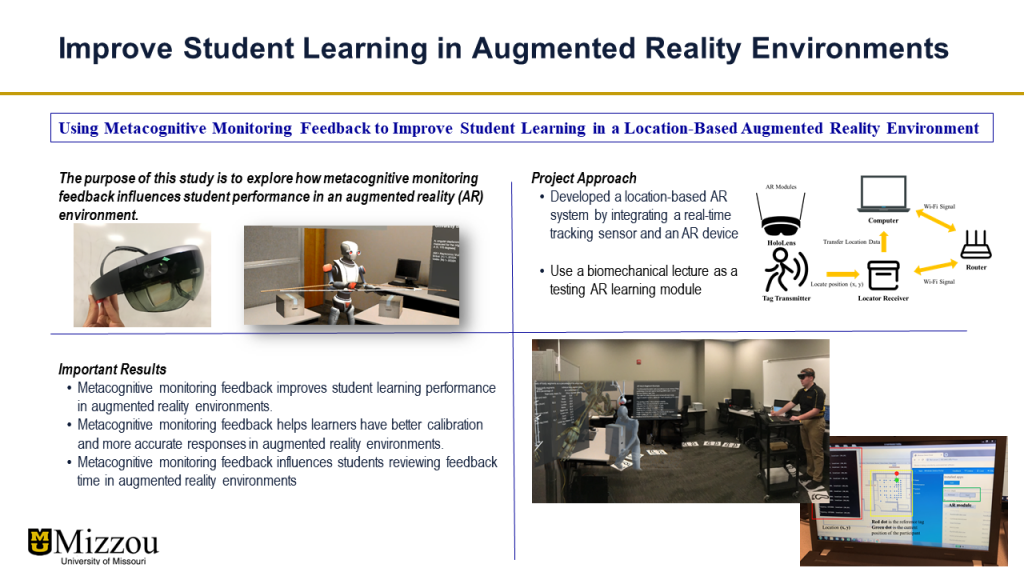Designing systems to improve human-computer interaction focuses on the interface between human capabilities and computer technologies in order to improve human performance.
Faculty
Jung Hyup Kim
- Usability Test and Workload Analysis
- Improve Student Learning in Augmented Reality Environments
Projects
Usability Test and Workload Analysis
 Project Objectives
Project Objectives
Test the effectiveness of Collision Avoidance Technology (CAT) with respect to driver behavior and performance.
Conduct the sensitivity analysis of the CAT devices
Offer design solution for a CAT system based on driver’s perspective
Estimate potential benefits of implementing a CAT system for public transportation
Important Results
- The overall effectiveness of a CAT system was about 75%, and the acceptance was about 69%.
- Drivers’ reliability was subjected to change over a period of time.
- Drivers’ adjusted their reliability of a CAT system based on the level of the false warning rate.
- After drivers continuously experienced a high false warning rate, they considered warnings as a nuisance.
Improve Student Learning in Augmented Reality Environments
 Project Objective
Project Objective
- To explore how metacognitive monitoring feedback influences student performance in an augmented reality (AR) environment
Important Results
- Metacognitive monitoring feedback improves student learning performance in augmented reality environments.
- Metacognitive monitoring feedback helps learners have better calibration and more accurate responses in augmented reality environments.
- Metacognitive monitoring feedback influences students reviewing feedback time in augmented reality environments